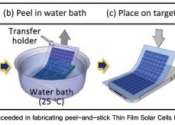Magnetic Nanotags Spot Cancer in Mice Earlier Than Current Methods
(PhysOrg.com) -- Searching for biomarkers that can warn of diseases such as cancer while they are still in their earliest stage is likely to become far easier thanks to an innovative biosensor chip developed by Stanford University ...






